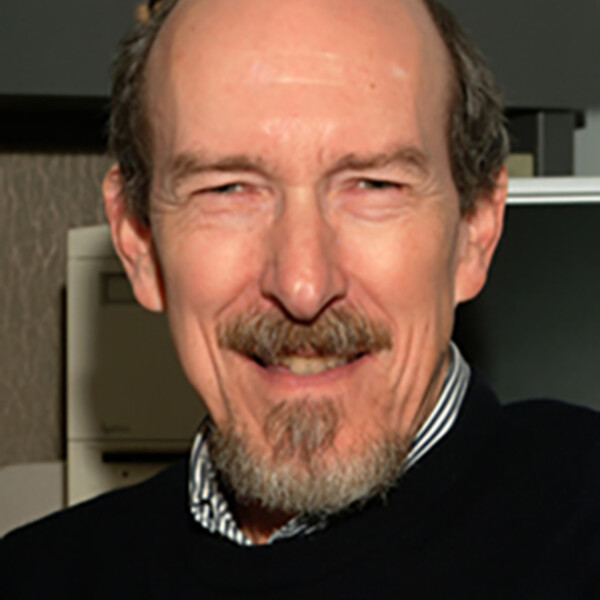Norman Iscove
MD, PhD, University of Toronto

At a Glance
- our research program addresses self-renewal, a central mechanism in normal and cancer stem cell systems.
- current work focuses on the role of Homeobox genes in sustaining self-renewal.
- we use retroviral transfer of HOXB4 to immortalize blood cell precursors that do not normally self-renew.
- deletion of the transfered HOXB4 causes loss of self-renewal.
- leukemia that arises from immortalized precursor cells turns out to be curable by removing the immortalizing HOXB4 transgene.
- self-renewal - as opposed to cell growth or survival - is not a current focus in cancer research. Our findings now provide dramatic illustration of the curative potential achievable when self-renewal is selectively targeted.
- FACS analysis and sorting, RNAseq, ATACseq, whole genome sequencing and deep informatic analysis of the datasets are central methodologies.
Short Bio
Norman Iscove is a Senior Scientist at the Princess Margaret Cancer Centre, University Health Network, and Professor in the Depts. of Medical Biophysics and Immunology at the University of Toronto. He earned the M.D. and Ph.D. degrees from the University of Toronto, the latter with Ernest McCulloch. After postdoctoral research at the Friedrich Miescher Institute in Basel, Switzerland, he remained a further 8 years in Switzerland as a member of the Basel Institute for Immunology. He joined the Princess Margaret Cancer Centre in 1986.
Research Synopsis
Adult stem cells maintain proliferating cellular systems for life. They do this by generating not only cells primed to enter differentiation pathways, but also cells that instead retain the undifferentiated stem cell characteristics of the parent - a process called "self-renewal".
We are interested in the genes that come into play when stem cells undergo self-renewal divisions, and in the means by which some initially renewing daughter cells lose self-renewal capacity while others continue to retain it through multiple cell divisions. Our findings in the hemopoietic system have led us to focus increasingly on particular homeobox genes as central effectors of self-renewal divisions, and on the genes that control their expression as specifiers of stable stem cell identity in this system. The emergence of leukemia subsequent to retrovirally enforced expression of HOXB4, and the dependence of continued propagation of the leukemia on the HOXB4 transgene, illustrates the therapeutic potential of targeting self-renewal mechanisms. The findings lend urgency to working out the mechanisms that underlie the connection between HOXB4 and self-renewal.
Identifying genes and pathways that differ between normal self-renewing hemopoietic stem cells and more advanced cells that do not sustain self-renewal. This work aims toward understanding how differentiating cells lose the immortality uniquely characteristic of the stem cells.
Identifying genes and pathways that differ between normal hemopoietic precursor cells that do not self-renew and similar cells that do self-renew by virtue of expression of a HOXB4 transgene. These experiments are directed at identifying pathways, circuits and proteins essential to self-renewal and immortalization.
Identifying, purifying and characterizing the biology of HOXB4-dependent leukemia stem cells. This work targets the molecular basis of the sustained self-renewal of the leukemia stem cells, and aims at developing strategies to interfere with the critical elements driven by the HOXB4 transgene.
More detailed description can be found at our laboratory homepage.
Recent Publications
- Hematopoietic stem cells engraft in mice with absolute efficiency. P Benveniste, C Cantin, D Hyam, NN Iscove. Nature Immunology. 4:708-713, 2003.
- Identification of gene 3' ends by automated EST cluster analysis. EM Muro, R Herrington, S Janmohamed, C Frelin, MA Andrade-Navarro, NN Iscove. Proc Natl Acad Sci USA. 105:20286-90, 2008.
- Intermediate-term hematopoietic stem cells with extended but time-limited reconstitution potential. P Benveniste, C Frelin, S Janmohamed, M Barbara, R Herrington, D Hyam, NN Iscove. Cell Stem Cell. 6:48-58, 2010.
- Gata-3 regulates the self-renewal of long-term hematopoietic stem cells. C Frelin, R Herrington, S Janmohamed, M Barbara, G Tran, CJ Paige, P Benveniste, JC Zuñiga-Pflücker, A Souabni, M Busslinger and NN Iscove. Nature Immunology 14:1037-44, 2013.
- Committed hemopoietic progenitors, not stem cells, are the principal responders to Hox gene transduction. H Lim, S Janmohamed, P Benveniste, R Herrington, M Barbara, C Frelin, D Hyam, CJ Paige, J-C Zuñiga-Pflücker, C Stocking, J Krosl, G Sauvageau, NN Iscove. BioRxiv/2017/174490, http://biorxiv.org/lookup/doi/10.1101/174490 , 2017.
Graduate Students
David Won
